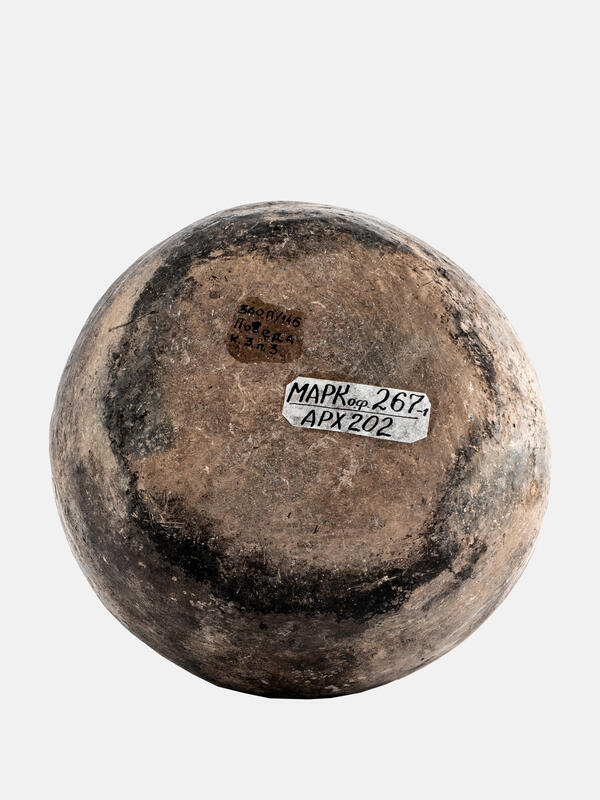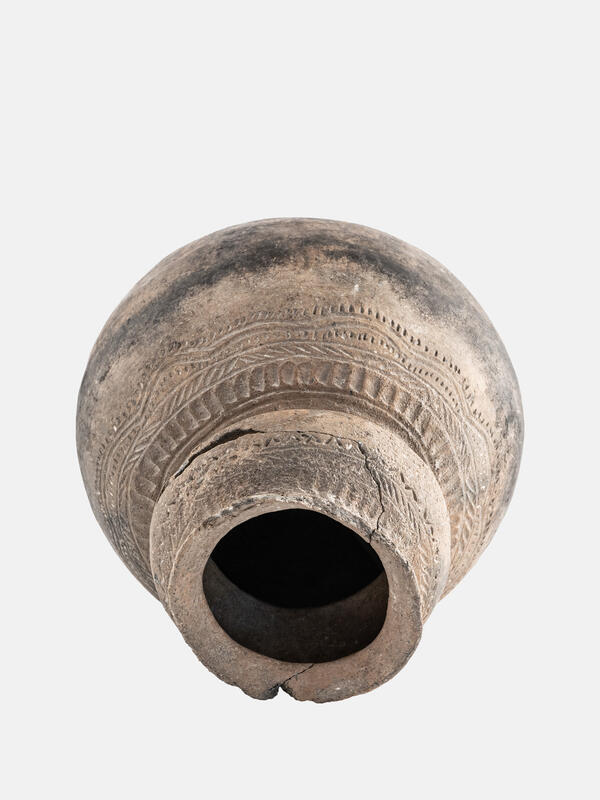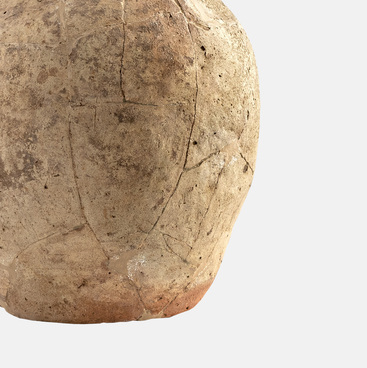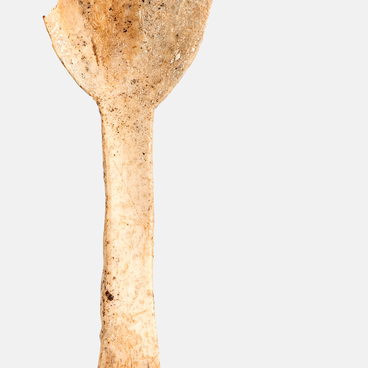The museum exhibition includes a ceramic vessel from mound 3 of the Pobeda burial ground in Kizilsky district of Chelyabinsk region. The burial mound was studied in 1999–2000 by the archaeological expedition of the Arkaim Museum-Reserve and Chelyabinsk State University led by Alexander Tairov and Ilya Lyubchansky. The Pobeda burial ground is located six kilometers northeast of the village of Zingeysky on a flattened hilltop and consists of three mounds with earthy, well turfed fill. Mound 3 was 20 meters in diameter and 0.8 meters high. Five grave pits were found under the mound. Among the finds were ceramic vessels, iron knives, a quiver with arrows (one bone arrowhead and twenty-three bronze ones), and the remains of an incomplete ram carcass.
Grave pit 3 is embedded in the southwestern flank of the mound. The entrance to the burial chamber was closed with poles and blocks. A skeleton of a woman was excavated at the bottom of the 1.1-meter-deep burial chamber. The buried woman was laid on her back, with her arms stretched along her body. There was a bronze torc around her neck and a silver ring on the ring finger of her right hand. At her right shoulder was a leather bag, inside which there was a bronze mirror with a long side handle, a bronze wheel amulet and an iron knife. At the right knee was a ceramic vessel, at the feet was a piece of chalk, two bone spoons, a shell, a ceramic spindle whorl and a round pebble.
The ceramic vessel was found at the feet of the woman’s skeleton. It has a flat bottom and consists of two parts. The body of its lower part is spherical, the upper part is flattened-conical, the high corolla is significantly bent. The surface of the vessel is carefully smoothed. The lower part of the vessel is decorated with two dashed wavy lines bounded by rows of small indentations, above them are three lines, between which are slanting indentations in different directions and large vertical ones. In the upper part there is a horizontal zigzag, above that there are inclined indentations in groups, which both above and below are limited by lines. Still higher are large vertical indentations and a horizontal line.
The materials of mound 3 demonstrate the emergence of the tradition of centric-circular layout of burials under the mound fill. The tradition was later developed in the Southern Urals and Lower Volga region.




